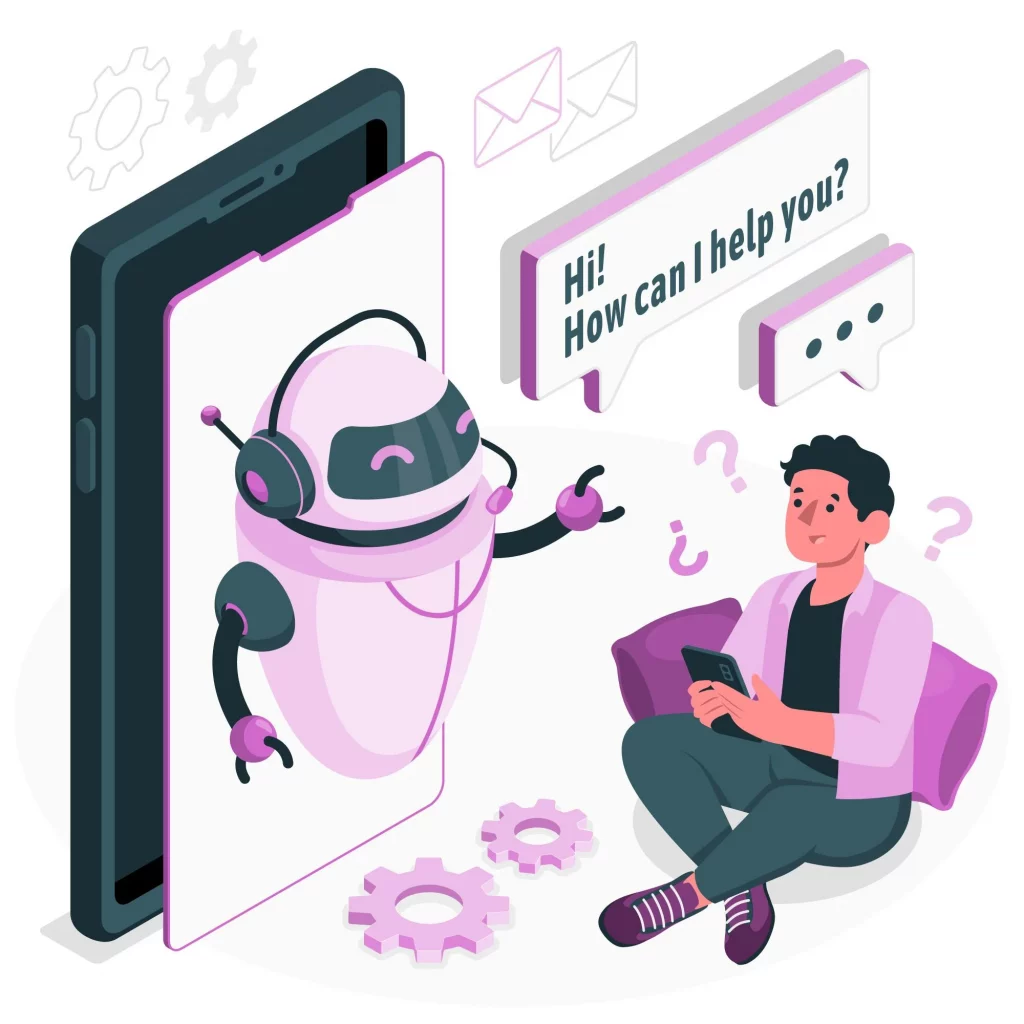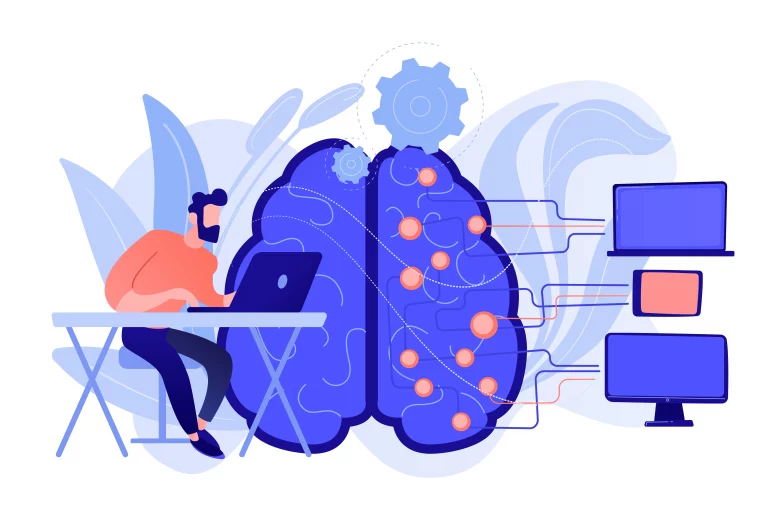“Artificial general intelligence (AGI) is defined as the intelligence of machines that allows them to comprehend, learn, and perform intellectual tasks much like humans’’. AGI imitates the human mind and behavior to solve any complex problem. These machines are designed and trained in such a way as to have comprehensive knowledge and cognitive computing capabilities. The performance of these machines is considered identical to that of humans.
AGI (also known as strong AI or deep AI) is developed on the theory of mind AI framework. The theory of mind-level AI explains the process of training machines to learn human behavior and recognize the fundamental aspects of consciousness. AGI, based on strong AI foundations, has the power to learn, plan, and execute cognitive processes such as making judgments, handling uncertain situations, and making decisions. Although AI has achieved significant landmarks in technology including the development of AGI, still it has many challenges.
A question arises in our minds that how the AGI is different from the current AI and how much more abilities it can have as compared to current AI. When we asked the CEO of Rev9Solutions AI, Syed Asad Kazmi, to shed light on it, he said:
“AGI, or Artificial General Intelligence, strives to parallel human intelligence, learning from experiences, applying logical reasoning, demonstrating creativity, and retaining memories without the need for constant fine-tuning with the latest data. In contrast to current AI, often tailored to specific tasks and reliant on continuous updates, AGI is envisioned as a versatile entity capable of concurrently executing a broad spectrum of tasks, encompassing skills such as vision, text processing, and forecasting.” Syed Asad Kazmi
Let’s delve deep into different approaches, shortcomings, and challenges encountered to achieve human-like intelligence.
Examination of the Cognitive Abilities of Deep AI
Researchers at the Max Plank Institute for Biological Cybernetics in Tubingen have observed the intelligence competency of the language model GPT-3, a masterpiece of AI. During the research, they used various psychological techniques to observe the capabilities such as casual reasoning and deliberation in comparison with the humans. Their findings have produced orthodox results; GPT-3 can compete with humans in some areas, but it fails in others, the reason could probably be the lack of interaction with the real world.
Neural networks can learn to respond to the instructions added in natural language and can produce versatile and quality text. GPT-3 is one of those powerful networks launched in 2020 by OpenAI. GPT-3 is trained on a huge amount of data gained from the internet, and it can produce a wide variety of text with just a single click. It is not only capable of writing articles and stories similar to man-made text but it is also expert in other fields such as maths or programming tasks.

The Linda Problem
Scientists at the Max Planck Institute for Biological Cybernetics examined the GPT-3 with a series of psychological questions to observe various aspects of general intelligence. They observed GPT-3’s decision-making skills, causal reasoning, information search, and the ability to question its initial intuition.
They compared the test results of GPT-3 with the answers of human subjects, and they found that the answers of both were correct and even the mistakes were similar to those of humans.

Active Interaction as a Part of the Human Condition
GPT-3 must have undergone some training before the launch just like any neural network. by receiving numerous textual data from various datasets, it has become able to understand how humans usually interact using their language and how they respond to language prompts.
To confirm that it really demonstrates human-like intelligence, they prepared some tasks and challenges. They found that in decision-making, GPT-3 performs the same as humans. When it comes to searching for specific information or causal reasoning, artificial intelligence falls way back. This is because GPT-3 passively receives information from texts but active interaction with the real world is just another level of experiencing real-world challenges through human cognition. Nevertheless, it is a huge development in the AI field and with time, when people would use more and more AI models like GPT-3, these models will learn more human attributes and human-like intelligence.
Key Challenges of Reaching the General AI stage:
Challenges in Mastering Human-like Capabilities
AI has to overcome the following challenges to achieve true human-like intelligence, such as:
Sensory perception
AI has achieved a landmark in the field of computer vision. still, it lacks human-like sensory perception capabilities. For instance, trained deep learning systems have poor color perception. The AI system of self-driving cars can be deceived by pasting black tape or stickers on a red stop sign.
Motor Skills
Due to our fine motor skills, we can easily retrieve any object from our pockets. Through applied reinforcement learning, a Rubik’s Cube was provided to a robotic hand to solve. Although it was a great attempt, there was a problem in programming robot fingers on a single hand.
Natural Language Understanding
Humans use various sources to share their knowledge such as books, articles, blog posts, and videos. When we intend to write, we tend to assume the target audience, in this way, many aspects of shared information remain unfolded. That is why AI needs to collect information from all kinds of sources and it is very crucial for AI because if AI lacks the basis of common sense, it would not be possible for the systems to compete with the real world.
Human-level Creativity
AI systems may become creative if they learn the art of coding. If they could identify and rewrite these codes with novelty and creativity, they could improve their creative skills up to the human level. In the recent past, AI-powered machines have composed music and drawn pictures, demonstrating human-like creativity skills although there is still room for improvement.
Social and Emotional Understanding
For AI-powered robots to operate in the real world, an understanding of human emotions is inevitable. If they could recognize the facial expressions or variations in the tone, it would be helpful for them to interpret real emotions. Considering the developments in AI as of now, still it looks like a distant reality.
Future Trends in General AI Advancements:
As AI advancements are at the peak level, the developments in human-like intelligence are fostering faster than ever before. Although AGI systems have not yet produced the desired outcomes, the recent trends in AI development pushing AGI progress further and further. Let’s discuss some of the trends that can play their part in the development of AGI.
NLP Development
NLP is an AI technology that converts human language into computer codes used in applications and programs. A recent example of a successful NLP version is chat GPT-3 launched by OpenAI. Over 175 billion parameters are used in this version to process languages. Similarly, GPT-4 is expected to deal with 100 trillion parameters for language processing. Interaction with such a huge amount of data is a good sign for the future of AI as it would help machines to understand the nature of human interactions in the real world.
Metaverse
Metaverse is widely accepted and appreciated by companies and individuals to work and interact in this virtual world. According to November 2021 statistics from DappRadar, 106$ million has been spent by users to buy virtual property in the metaverse, concentrating on digital land, luxury, and other assets.
Rise in Low-code or No-code AI
Skilled data science workers or AI engineers are high in demand. There is always a need for more skilled engineers in organizations who can train AI models and tools to make business performance better and seamless.
Low-code or no-code AI programs offer interfaces that help in creating complex systems. Usually, low-code systems allow drag-and-drop features, easing the application development process.
AI Chatbots
Chatbots are AI-powered virtual assistants. They are used by different organizations to carry out conversations and specific operations, such as responding to FAQs or resetting passwords. These chatbots have reduced the cost of organization by replacing customer care representatives. As the NLP landscape is evolving continuously, AI chatbots will surely play their part in the development of AGI in the future.
Quantum AI
With the growing impact of AI in almost every field, quantum AI is ready to speed up the developments even further. With quantum AI, results are expected to be achieved in a shorter time. It could also help in overcoming AGI obstacles by creating a strong knowledge base by analyzing vast amounts of data from different sources in minimal time.
Conclusion
This is a crucial time for the development of AGI systems. Experts say that up to 25% of human-level AI could be achieved by the end of 2030. The rise in the use and dependency on AI and robotic processes along with computing advancements will establish a flourishing ground for the future of AI platforms. The way AI systems are evolving day by day, AGI systems will be part of the mainstream soon in this highly technological world.

Pingback: What will be the Future of AI Chatbots? - Rev9Solutions